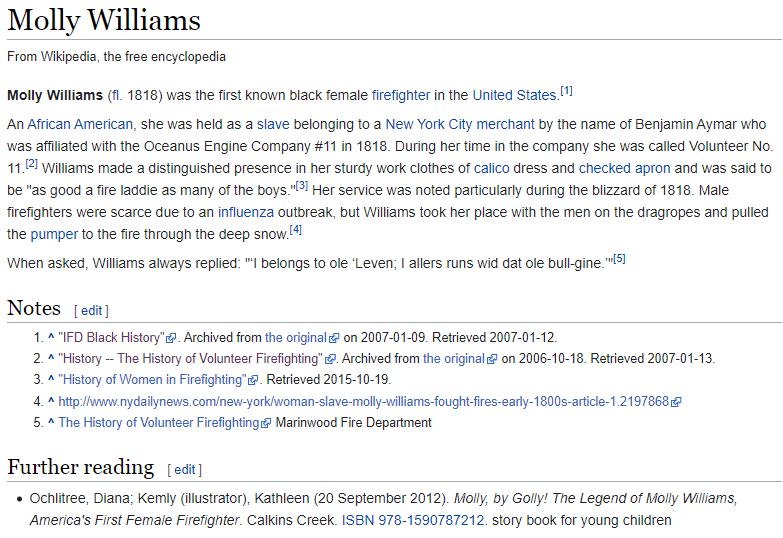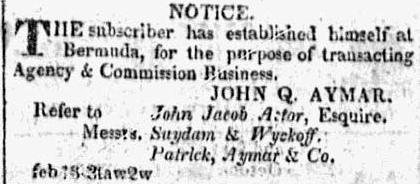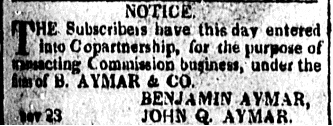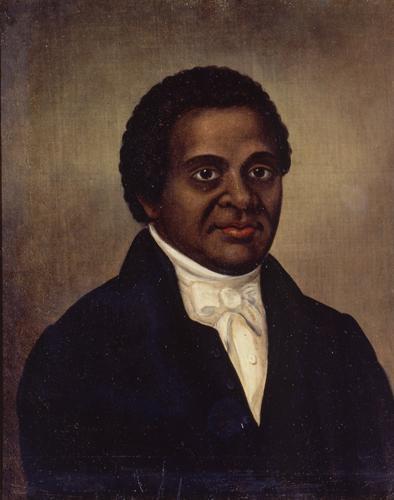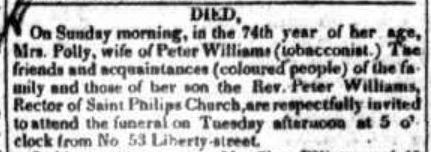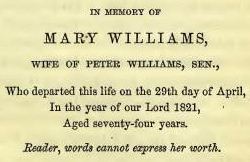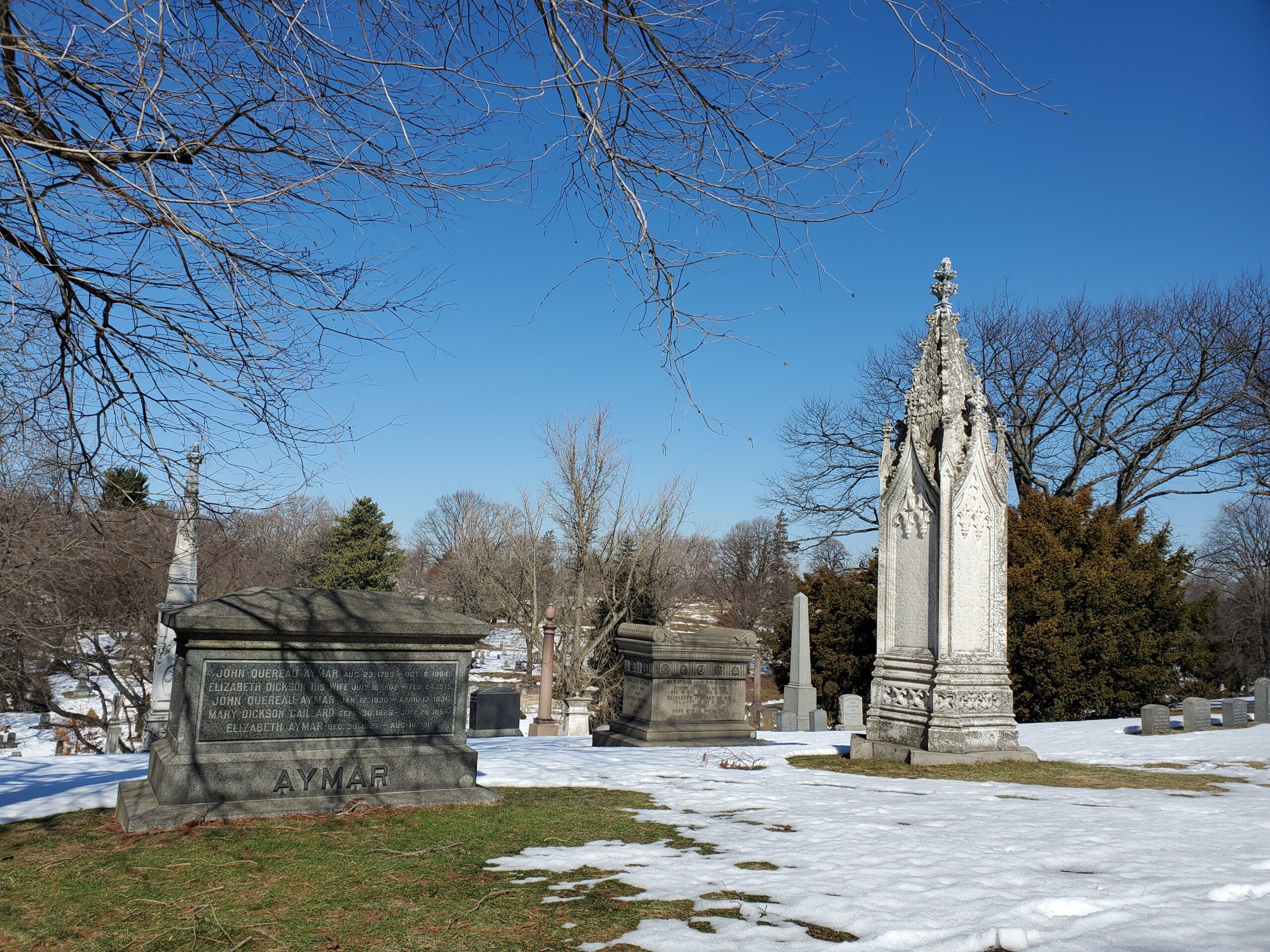
Recently, while watching an episode of The Alienist, I was curious if the character of Sara Howard, played by Dakota Fanning, was based on a real person. After all, the show was based on events in New York City in late 1800 and included such individuals as Theodore Roosevelt and J.P. Morgan. It appears, Fanning’s character, to some degree, was based on Isabella Goodwin, the first female detective in New York City. While reading about Goodwin, I asked myself who was the first female firefighter. A quick search online revealed that to be Molly Williams.
According to her Wikipedia entry, Molly Williams was an African-American, which meant that she was also the first black person to be a firefighter in New York’s history. Unfortunately, not much was known about Williams, except that “she was held as a slave belonging to a New York City merchant by the name of Benjamin Aymar who was affiliated with the Oceanus Engine Company #11 in 1818.”
English language Wikipedia entry for Molly Williams (screenshot)
The fact that Molly Williams was an enslaved person may explain why hardly any information was recorded about her. But the entry about her in the online encyclopedia did have few clues to which I could cling. What is the history of Oceanus Engine Company 11? Who is Benjamin Aymar? Perhaps answering these questions may shine some light into the life of Molly Williams.
Oceanus Engine Company No. 11 was one of the volunteer fire companies that existed in New York before 1865. According to George William Sheldon (1843-1914) who, in 1882, published The Story of the Volunteer Fire Department of the City of New York, Engine 11 was “Organized before 1783. Located, in 1796, in Hanover Square, and after 1813 in Old Slip. About 1836 removed to 118 Wooster Street, and after 1854 located at 99 Wooster Street. Went out of service in 1865.” In the appendix of his work, Sheldon lists members of the engine companies for the years 1793 and 1796 only.
In 1885, James Frank Kernan (1840-1907) published Reminiscences of the Old Fire Laddies and Volunteer Fire Departments of New York and Brooklyn. Kernan also had an appendix in his work where Oceanus Engine Company 11 was listed. Unfortunately, he only gave a list of officers prior to disbandment of the company in 1865, and no specific list of its prior members.
Both Sheldon in 1882 and Kernan in 1885, appear to be the earliest authors on the subject of firefighters that mention Molly. Their accounts although tell a similar story, vary in some details. In Sheldon’s book, on pages 46 and 47, I read the following:
“One of the famous ‘volunteers’ of the earlier days was an old negro woman named Molly, a slave of John Aymar (the father of William Aymar). Mr. Aymar, by-the-way, was the last of the old Knickerbockers of New York; a fine, trim old gentleman, who continued to wear the style of dress common among the better-to-do old Knickerbockers–a long-tailed coat, knee-breeches, silver shoe-buckles, and the inevitable queue. One of his sons was Benjamin Aymar, the founder of the eminent mercantile house of Aymar & Company. Well, Molly was his slave, and a very distinguished volunteer of No. 11 Engine. She used to be called ‘Volunteer No. 11.’ I can see her now, with her nice calico dress and check apron, a clean bandanna handkerchief neatly folded over her breast, and another wound about her head and rising up like a baby pyramid. Once, during a blinding snow-storm in 1818, there was a fire in William Street, and it was hard work to draw the engine; but among the few who had hold of the drag-rope was Molly, pulling away for dear life. This may have been the only time that she took hold of the rope, but afterward, when asked what engine she belonged to, she always replied, ‘I belong to old ‘Leven; I allers runs wid dat ole bull-gine.’ You could not look at Molly without being impressed by her really honest face–it was a beaming light-house of good nature.
Within the pages of Kernan’s work, ignoring some of the unfortunate language of the author, I read the following on pages 58 and 59:
While on the subject of “aunties,” I must not forget an incident which occurred many years ago, when one of these faithful creatures particularly distinguished herself. She was a servant in the employ of old Benjamin Aymar, and familiarly known as “Molly.” It was her boast that she was as good a fire laddie as many of the boys who at that time bragged of being such. Her master belonged to 11 engine, and as a natural sequence “Molly’s” sympathies were with that particular “machine.” It is truthfully related of her, that in 1818, while a terrific fire was raging in William Street, she did what few of her sex would have done. A blinding snow-storm was prevailing at the time, and it was almost impossible to drag the engine to the fire or secure members enough to hold the rope. Among the few who helped drag the engine to the fire was “Molly,” and her heroic action on this occasion has been frequently alluded to in the most flattering terms. It used to be her boast, when asked what engine she belonged to, to say, “I belong to ole ‘Leven; I allers run wid dat ole bull-gine.” There are some to-day who remember “Molly” quite as well as they do “ole ‘Leven.”
Another historian mentioning Molly was Augustine E. Costello (1848-1909), who in 1887 published Our Firemen. A History of the New York Fire Departments, Volunteer and Paid. Costello makes mention of Molly twice in his work, but strangely, the two accounts vary in their details. First, I find the following on pages 151 and 152:
Among the women who used to minister to the comfort of the laddies was the servant of a member of No. 11 Engine, Mr. Benjamin Aymar. She was known as “Molly.” Molly considered herself to be permanently attached to No. 11, and stood up for the superiority of the machine under all circumstances. She boasted that she belonged to “ole ‘Leven,” and used to say, “I allers runs wid dat ole bullgine.” On one occasion, in 1818, a blinding snowstorm prevailed when a fire broke out in William Street. The boys had the utmost difficulty in dragging their engine through the snow-obstructed streets, and had not men enough on the rope. Molly came along, hitched on to the rope and helped to drag the machine to the fire. This deed of Molly’s was often recounted in the station houses.
Then on page 503 another mention of Molly as follows:
Mr. Pentz’s reminiscences of fire matters in the good old times would fill a respectable volume. One of his earliest recollections as a boy is of seeing Molly, a slave of John Aymar, who was quite a character in her day, helping the firemen to drag old 11 Engine through a snowdrift in William Street in the winter of 1818. It was Molly’s boast that she belonged to “Ole ‘Leben,” and always ran with it.
Mr. Pentz in Costello’s account is Adam Perry Pentz (1811-1887), who came from a long line of firemen. It is important to note here that Pentz died in February 1887, which was the same year when Costello published his work. If Costello interviewed Pentz personally, I wonder what was Pentz’s condition at the time of his reminiscing; could I rely on the details of his story?
Aymar Genealogy
From the Aymar of New York by Benjamin Aymar, published in 1903
John Aymar was born on January 23, 1758 in New York to Daniel Aymar (1733-1815) and Ann Magdalene Magny (1738-177?). He was the grandson of Jean Eymar and Francoise Belon. Eymar was a Hugenot and the progenitor of the name in America, having adopted the spelling Aymar in his life time.
As early as 1787, John signed his name John D. Aymar. This is the same John Aymar that is called “the last of the old Knickerbockers of New York” in Molly Williams’ accounts; as to him being the “master” of Williams is yet to be verified. He died on October 20, 1832 in New York and was originally buried in St. Thomas’ churchyard, but removed to The Green-Wood Cemetery on May 10, 1864. He was married three times: first to Jane Lagear (1765-1786) on April 14, 1785; second to Judith Quereau (1767-1799) on April 22, 1787; and last to Elizabeth Quereau (1774-1854) on August 14, 1800. He did not have any children with his first wife, and between his second and third wives, had fifteen children as follows:
- Hannah (1788-1813)
- Daniel (1790-1825)
- Benjamin (1791-1876)
- William (1794-1794)
- Ann Magdalene (1795-1879)
- Jane (1797-1828)
- John Quereau (1799-1864)
- Samuel (1801-1879)
- William (1802-1884)
- Judith (1805-1888)
- Francis (1806-1827)
- Elizabeth (1808-1858)
- Caroline (1810-1874)
- Louisa (1811-1842)
- Hannah (1813-1877)
Many Aymar family members who died before 1838, the year when The Green-Wood Cemetery was founded, were removed from their original place of interment and reburied in Green-Wood.
One common trait between Sheldon, Kernan, and Costello is that they depicted Molly as brave and yet uneducated, and as a servant and yet so grateful of her position. In 2018, Kyle T. Bulthuis wrote Tobacconist, Methodist, African, Patriot: Uncovering the Real Peter Williams in Early Republic New York City for New York History journal. Describing historians of 20th Century, he wrote that their “work [was] built upon a long tradition of infantilizing blacks,” such that can be observed in the works of the above mentioned authors.
The style of their works aside, between Sheldon, Kernan, and Costello, none of them give Molly’s surname. So where did Williams come in? It is also hard to distinguish between them about the first name Molly: was it her nickname or actual name? Nothing else is known about her origins either: was it Benjamin Aymar or John Aymar who was “the master” of Molly?
I will return to the issue of surname Williams, but first I had to dive into the Aymar genealogy in order to answer the question of who was the person who enslaved her. The search lead to The Green-Wood Cemetery, where I found fifty persons with that surname laid to rest. The list included two Benjamins and four Johns, who were buried in Section 100, as follows:
- Benjamin N. Aymar buried in Lot 681 on January 2, 1849
- Benjamin Aymar buried in Lot 681 on March 19, 1876
- John Q. Aymar buried in Lot 681 on November 29, 1844
- John Q. Aymar Jr. buried in Lot 682 on December 2, 1844
- John D. Aymar buried in Lot 679 on May 10, 1864
- John Q. Aymar buried in Lot 682 on October 12, 1864
According to the Cemetery’s records, in July 1844, the following Aymar family members purchased lots in Section 100.
- Lot 679 by William Aymar
- Lot 680 by Samuel Aymar
- Lot 681 by Benjamin Aymar
- Lot 682 by John Q. Aymar
To return to the list of Benjamins and Johns buried in The Green-Wood Cemetery, with help of Aymar of New York, I know the following to be correct: Benjamin N. Aymar (1823-1848) and John Q. Aymar (1819-1843), buried in Lot 681, were sons of Benjamin Aymar (1791-1876), purchaser of the lot; John Q. Aymar Jr. (1830-1831), buried in Lot 682 on December 2, 1844, was son of John Q. Aymar (1799-1864), purchaser of the lot; and lastly, John D. Aymar (1758-1832), buried in Lot 679 on May 10, 1864, was father of William Aymar (1802-1884), purchaser of the lot.
While looking through the records of persons buried in the four Aymar lots, I saw a name that made me whisper to myself, “It must be her.” On April 22, 1857, Diana Williams was buried in Lot 682 of John Q. Aymar. I was not sure if “Molly” could be short form of Diana, but the records of the cemetery indicated that Diana Williams was born in West Indies, and died on April 21, 1857 at the age of 90 years. This means she was born about 1767, and would have been about 51 years old in 1818 when “a terrific fire was raging in William Street.” Could Diana Williams be the same person as Molly Williams, our first female firefighter? Before I can conclusively say that, there are few other nuances to the story that I have to consider.

From the records of The Green-Wood Cemetery
The four Aymar lots are conjoined and are located on top of the Ocean Hill off of Vision Path from Atlantic Avenue. A gray granite monument faces the path, and as I approached it, the family name AYMAR is clearly visible inscribed on the bottom. On the left panel of the monument, I read: Dinah. Faithful Family Servant.
As early as 1850, Diana Williams was recorded living in the household of John Q. Aymar (1799-1864), brother of Benjamin Aymar. Information about Diana in the Cemetery’s records does not match to what was recorded about her in the census. In 1850, she was recorded as being 80 years old and born in North Carolina; and five years later, when the New York State census was enumerated, she was listed as 85 years old servant but born in Virginia.
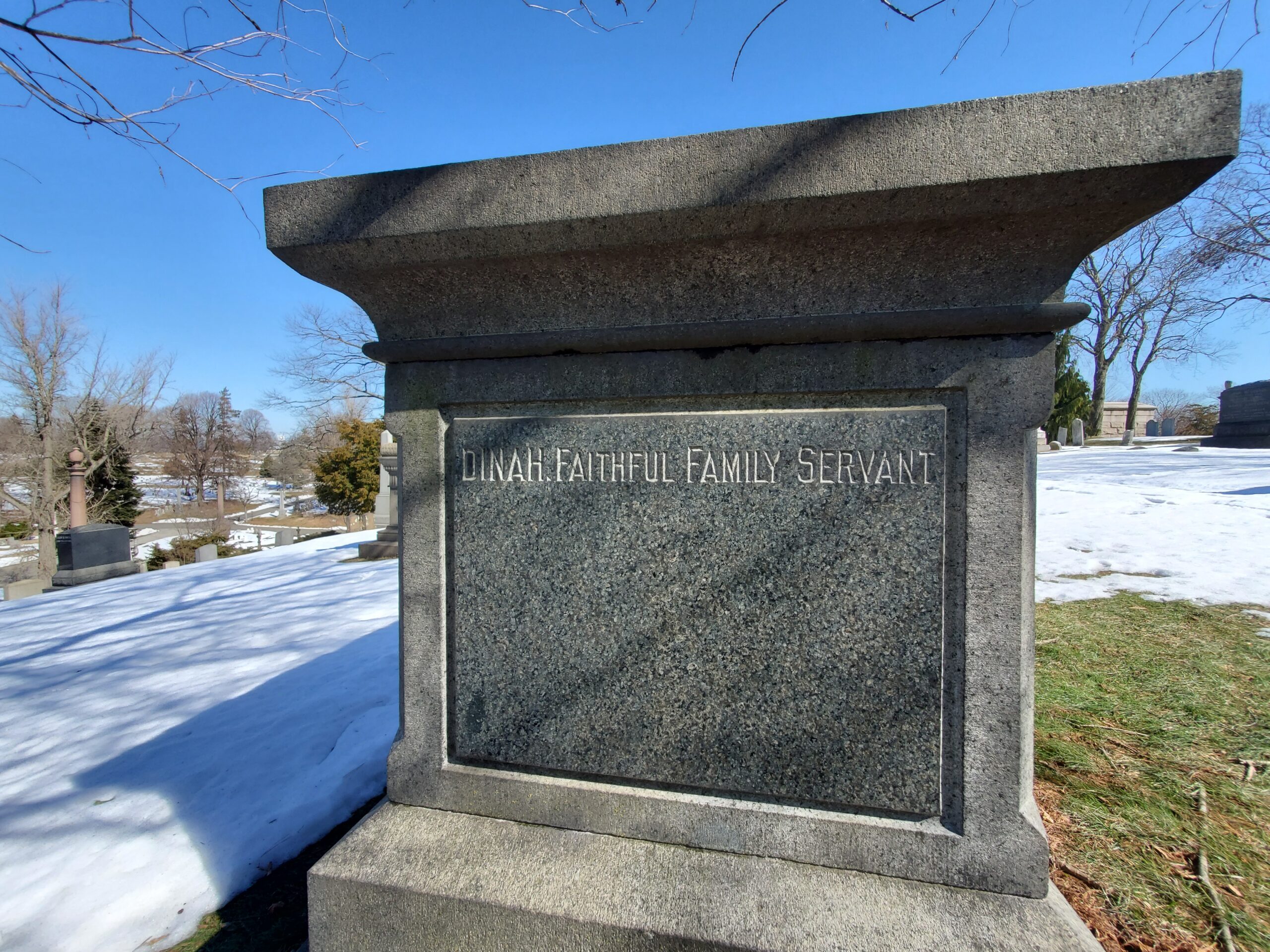
Diana Williams’ inscription on Aymar family monument, Lot 682, Section 100
From the Aymar genealogy, I know that Benjamin Aymar (1791-1876) was the one who was associated with Oceanus Engine Company No. 11, as his children were not yet born when the story of Molly Williams took place. It is still not clear if Benjamin’s father, John D. Aymar (1758-1832), was the one who had enslaved Molly, or if it was Benjamin himself who was the “employer” of Williams. One thing is certain is that Benjamin, son of John D. Aymar, was the same person who founded Aymar & Company, as mentioned by Sheldon. Benjamin and his brother, John Q., were partners in the firm (see below).
I know Diana Williams was a servant in John Q. Aymar’s household, but I am still not sure if she was the same person as Molly Williams. Sometime in 1820s, John Q. moved into the house of his brother, Benjamin, at 42 Greenwich Street. Is it possible when she was living with Benjamin Aymar, the family called her Molly, and later she moved to John Q. Aymar’s household, she was called Diana/Dinah? Maybe it is a bit of a stretch, but Kernan did write that she was “familiarly known as ‘Molly.'” In any case, there’s much more sleuthing to do on my part. Before I continue the story of Molly Williams, I must turn my attention to Peter Williams.
Aymar & Company
One of the most complete sources for the history of Aymar & Company is found in the fourth volume of The Old Merchants of New York, which was published by Joseph Alfred Scoville (1815-1864). Scoville wrote under a pseudonym Walter Barrett, and dedicated entire Chapter IX on the endeavors of brothers Aymar. For some of the minor details, I had to consult historic newspapers, and the result is follows.
Sometime in 1783, Shedden, Patrick & Co. was established in New York by William Shedden, his nephew John Patrick, and William B. Todd at 206 Water Street. Their trading routes included the West Indies, St. Petersburg, Russia, and India. By 1788, “They were the largest merchants in the city.” In November of 1798, Shedden died, and shortly after, Todd left the company. Patrick became the sole owner of the company in January 1799, and by November of the same, he operated and lived at 4 William Street. From 1802, the firm operated from 32 South Street with clerks assisting Patrick; they were Robert H. Stewart, and Benjamin Aymar. Scoville also says that John Q. Aymar was a clerk in the firm in 1802, but this must be a mistake, as he would have been only 3 years old at the time.
In March 1807, Richard Clague of New Orleans joined as partner and the firm was known as John Patrick & Co. Two years later, Benjamin Aymar became a partner, and since the name did not change, it is assumed that Clague had left the company. By 1812, the firm was operating from 30 South Street; at this time, Benjamin was living at 42 Greenwich Street. In 1815, the name changed to Patrick, Aymar & Co. Scoville says that John Q. Aymar had returned to the company prompting the name change, but it is more likely that he joined the company for the first time, as he would be about 16 years old. In 1819, John Q. was stationed in Bermuda acting on behalf of the firm.
On November 23, 1820, Benjamin and John Q. became partners of the firm B. Aymar & Co, John Patrick having left the firm early in the year. By 1824, the store moved to 34 South Street, from whence they operated for many decades, even after the demise of both brothers Aymar. In later years, the firm was simply known as Aymar & Co.
Peter Williams was also an enslaved person, but unlike Molly Williams his life is better recorded. His parents were enslaved by the Boorite family, so he was born into slavery. At some point in his life, Peter Williams was enslaved by James Aymar (1735-1797). James, whose name in the Aymar genealogy (above) is given as Jean Jacques Aymar, was a prominent tobacconist in New York, and “an officer in the New York Loyalist Militia.” At the end of the Revolutionary War, when the British left the City of New York, James Aymar sold Peter Williams to the trustees of the John Street Methodist Church. By 1796, Peter Williams paid of his debt to the church, obtaining his freedom, and opened a business of a tobacconist himself. He was also instrumental in laying the cornerstone for the African Methodist Episcopal Zion Church in 1801.
A greater detail of history can be read in Lost Chapters recovered from the Early History of American Methodism published in 1858 by Rev. Joseph Beaumont Wakeley (1809-1875). Peter Williams’ story is unique in many ways, including being one of the few enslaved persons whose portrait was painted. For this narrative, Peter’s story serves a different purpose.
Sometime in 1785, Peter Williams married Mary Durham, an indentured servant from St. Christopher’s Island in West Indies. Wakeley, while telling her story, called Peter Williams’ wife “Molly” on several occasions, as if it were an interchangeable name for Mary. Thus, wife of Peter Williams the tobacconist became Molly Williams within the pages of history in 1858.
In 1952, Kenneth Holcomb Dunshee (1900-1964) published As You Pass By, in which he mentioned the story of Molly Williams, the firefighter. He also wrote about Peter Williams, the tobacconist. Somehow, while writing his book, Dunshee mixed two Molly Williams’, as well as mixing members of the Aymar family. In essence, Dunshee called the firefighting Molly Williams a wife of Peter Williams, and this historical error was perpetuated by all others who came after him. Historian Bulthuis is the only one who identified the mistake. In his essay about Peter Williams, Bulthuis points out how historians of 20th Century not only perpetuated the offensive language of early writers, but also their “scholarly mistakes.”
Thus, in 21st Century, we have a Wikipedia page about Molly, in which she is described as the first female firefighter, whose surname is Williams. What this means for me is that Diana Williams, the servant in the family of John Q. Aymar, is not the same as Molly, the firefighter. All I know with certainty, after sifting through the pages of so many historical works, is that there was a female firefighter whose name was Molly and she was enslaved by John D. Aymar, or his son, Benjamin Aymar, but her whereabouts are yet unknown. It could be a pure coincidence that Diana, who is buried in the family lot of John Q. Aymar, has a surname of Williams. But I am not yet satisfied how this story ends. I am still hoping to find more information on Diana Williams, and Molly the first female firefighter. Back to dusty pages of history I go.
Obituary of Mrs. Polly Williams (Mary Williams) in The New York Evening Post, April 30, 1821, page 2

